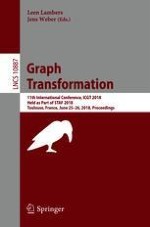2018 | Buch
Graph Transformation
11th International Conference, ICGT 2018, Held as Part of STAF 2018, Toulouse, France, June 25–26, 2018, Proceedings
herausgegeben von: Leen Lambers, Jens Weber
Verlag: Springer International Publishing
Buchreihe : Lecture Notes in Computer Science
